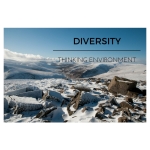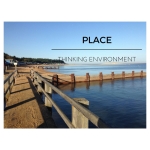Keynote from the PDNorth Conference #PDNconf2017 at Myerscough College, 6th July 2017. The session began with a Thinking Environment question: “No-one has truly arrived until they have spoken.”
 It might say on the slideshow, rather grandly, that I am an Independent Thinker by trade, but in fact I have lots of professional frocks and until very recently I was an FE teacher too. I might variously describe myself as a writer, public speaker, facilitator, digital nurse and even a dancing princess – but what connects all of this work are my values; valueswhich are focused on strengthening the public sector workforce. I want to help make public service a national treasure again – in my view, it always has been.
It might say on the slideshow, rather grandly, that I am an Independent Thinker by trade, but in fact I have lots of professional frocks and until very recently I was an FE teacher too. I might variously describe myself as a writer, public speaker, facilitator, digital nurse and even a dancing princess – but what connects all of this work are my values; valueswhich are focused on strengthening the public sector workforce. I want to help make public service a national treasure again – in my view, it always has been.
The values I work and try and live by are enshrined in a process called The Thinking Environment and I wish I’d been the first to write about it but credit goes to the woman who trained me in its Applications – Nancy Kline. On the first day I met Nancy, she greeted a room full of this many people by saying, “No-one has truly arrived until they have spoken,” and then she asked everyone to spend two minutes in a thinking pair. It was excruciating, but I’m going to ask you to do the same, because I’ve come to recognise the absolute truth of those words.
I’m wanting you to do a little more than simply introduce yourselves to each other in pairs. I’m wanting you to introduce yourselves attentively, because good quality attention generates the best thinking. So although the room will be in complete  cacophony, what I need you to do is find a little ease, turn to your partner, ask them what they want to say about themselves, then shut up and really listen for one minute, even if they run out of things to say. That involves not even interrupting a silence. It’s completely counter-cultural, as teachers we fill silences all the time.
cacophony, what I need you to do is find a little ease, turn to your partner, ask them what they want to say about themselves, then shut up and really listen for one minute, even if they run out of things to say. That involves not even interrupting a silence. It’s completely counter-cultural, as teachers we fill silences all the time.
Don’t start right away! A word, before we begin, about equality. You have one minute each and we’ll do it on the clock because it’s important that each of those minutes is 60 seconds long. I know it sounds like a no-brainer, but how often do we give up our own time, to hear others speak? Or dominate the time that we have with another person? To safeguard equality, the very least we can do is give one another equal time. So I will start the clock, I will listen for the one minute alarm, and I’ll tell you when to change over.
Two minutes pass…
Welcome back, we are all in the room! Thank you for participating. The Thinking Environment is why I was asked here today. Claire and Sue recognised how powerful these processes could be for a Professional Exchange, which is, after all, about us learning from each other and learning about ourselves, developing self-awareness to take back control of our own professional destinies. It’s all about agency for me. My work on national projects over the past couple of years has enabled me to sadly see that the  further education workforce is suffering from a collective low self-esteem, a loss of self-belief caused by the cloth that enfolds us being cut way too thin…our organisations shape and re-shape, merge and un-merge, we are reorganised, inspected, observed, scrutinised, reduced, downsized and generally done to. To borrow a Brexiteer’s phrase, it’s about time we took back control. Professional Exchanges are all about that for me, a steadfast beacon of critical friendship in these choppy political seas. I think of Professional Exchanges as constellations of mutual inspiration and support and it’s a delight to me to be invited here for the end of your time with PDNorth.
further education workforce is suffering from a collective low self-esteem, a loss of self-belief caused by the cloth that enfolds us being cut way too thin…our organisations shape and re-shape, merge and un-merge, we are reorganised, inspected, observed, scrutinised, reduced, downsized and generally done to. To borrow a Brexiteer’s phrase, it’s about time we took back control. Professional Exchanges are all about that for me, a steadfast beacon of critical friendship in these choppy political seas. I think of Professional Exchanges as constellations of mutual inspiration and support and it’s a delight to me to be invited here for the end of your time with PDNorth.
The best Professional Exchanges are anti-competitive. Everyone who cares enough about their practice to rock up here knows that the old days of hoarding skills and resources are long gone. The web is changing the nature of engagement in education and if that frightens you I’m here today to help you get with the picture – here not as an technical expert, but as someone whose practice was transformed by Twitter. Anyone here remember the impossible price of resource books in the early days? I remember one of the first things I did when I started teaching twenty years ago was spend £80 of my budget on a book of adult learning activities that were copyright free. £80! That was a lot of dollar for a charity to find! These days I’d find every one of those activities (legally)  online, plus a million more – they weren’t rocket science to be honest, but someone was making a lot of money from them. Now, it’s all out there – Open Resources, Open Research, Creative Commons…no need to stockpile ideas because they can be refreshed in a heartbeat. Professional Exchanges are about encouragement – another of those Thinking Environment values. You’ll see that encouragement encapsulates the word courage: going beyond competition to work together as critical friends. In those parts of adult education that are exploring co-production, anti-competition is extending to genuinely collaborative work with students, too – students as equals.
online, plus a million more – they weren’t rocket science to be honest, but someone was making a lot of money from them. Now, it’s all out there – Open Resources, Open Research, Creative Commons…no need to stockpile ideas because they can be refreshed in a heartbeat. Professional Exchanges are about encouragement – another of those Thinking Environment values. You’ll see that encouragement encapsulates the word courage: going beyond competition to work together as critical friends. In those parts of adult education that are exploring co-production, anti-competition is extending to genuinely collaborative work with students, too – students as equals.
And this is the moment. This IS the moment. There’s a change in the air. I’m not talking party politics here, I’m talking a murmuration, a growing sense of outrage – even before Grenfell – that public service is sleepwalking into a nightmare. The fractured political landscape is opening up progressive alliances and new thinking; further education is once again being talked about in decision-making places. Even committed capitalists are starting to believe that austerity has gone too far and policy-makers are waking up to what we have been telling them for years – to be successful on any terms, this country needs a functioning, robust adult and further education sector.
It’s a quiet revolution. It’s the moment when values-led decisions make slow and patient ground, after years of money-first decision making. The practices we’ll explore today – attentive listening, community building, effective digital practice – are in my view the only sustainable future for education.
It’s a quiet revolution. It’s the moment when values-led decisions make slow and patient ground, after years of money-first decision making.
Throughout today, I want you to tune into your own values base. I’m going to talk you through the Thinking Environment values and I’d love you to make cognitive and emotional connections with your intentions for today.
 Attention is generative in a Thinking Environment, by which we mean that the quality of it is so fine, it generates the very best thinking. Knowing that you will be heard and won’t be interrupted – even if you fall silent for a while – is a powerful cultural shift. Interrupting derails thinking. I really hope that you get the chance today, to be listened to without interruption. You’ll never go back.
Attention is generative in a Thinking Environment, by which we mean that the quality of it is so fine, it generates the very best thinking. Knowing that you will be heard and won’t be interrupted – even if you fall silent for a while – is a powerful cultural shift. Interrupting derails thinking. I really hope that you get the chance today, to be listened to without interruption. You’ll never go back.
 Appreciation is not praise. There’s something in praise which suggests the praiser and praisee are not equals. Appreciation is a succinct, specific, affirmative comment from one equal thinker to another. It builds self-worth, creates really good karma and, given a ratio of 3:1 appreciation to criticism, it also allows challenges to be heard and taken on board.
Appreciation is not praise. There’s something in praise which suggests the praiser and praisee are not equals. Appreciation is a succinct, specific, affirmative comment from one equal thinker to another. It builds self-worth, creates really good karma and, given a ratio of 3:1 appreciation to criticism, it also allows challenges to be heard and taken on board.
 Equality is at the heart of my own practice and is a value I believe we need to reclaim as a profession. Our sector has become so hierarchical that the thinking creeps in that one human being is better than another. Really? The belief of the Thinking Environment is that one thinker is the equal of another thinker, no matter where our relative positions in the hierarchy are. The Thinking Environment is an equalising practice.
Equality is at the heart of my own practice and is a value I believe we need to reclaim as a profession. Our sector has become so hierarchical that the thinking creeps in that one human being is better than another. Really? The belief of the Thinking Environment is that one thinker is the equal of another thinker, no matter where our relative positions in the hierarchy are. The Thinking Environment is an equalising practice.
 I’ve spoken already about Encouragement. Embracing the word ‘courage’, takes us beyond the cutting edge of competition, to a world where we truly believe we can work together generously as critical, collegiate friends.
I’ve spoken already about Encouragement. Embracing the word ‘courage’, takes us beyond the cutting edge of competition, to a world where we truly believe we can work together generously as critical, collegiate friends.
 In the public sector, the word Diversity takes us down an equalities monitoring pathway, or drifts us into endless mission statements, so let’s reclaim this essential concept. Diversity happens when we bring perspectives into our thinking that are formed from experiences which have been different to ours. This includes seeking out absent identities and listening to what they have to say. It’s Diversity that lets the newness in.
In the public sector, the word Diversity takes us down an equalities monitoring pathway, or drifts us into endless mission statements, so let’s reclaim this essential concept. Diversity happens when we bring perspectives into our thinking that are formed from experiences which have been different to ours. This includes seeking out absent identities and listening to what they have to say. It’s Diversity that lets the newness in.
Place matters. Place matters because it says back to everyone there, “You matter.” I’ll  leave the charred image of Grenfell Tower in your mind, while you think that one over.
leave the charred image of Grenfell Tower in your mind, while you think that one over.
We can’t make a decision if Information is unknown or withheld from us. Information helps us dismantle our own denial and unpick the assumptions that get in our way. In a Thinking Environment, we differentiate between Information and that which masquerades as Information – opinion (often the opinion of the powerful). As  professionals, learning the twenty-first century skills of curation, discernment and critical questioning is vital, to bring accurate information to our thinking.
professionals, learning the twenty-first century skills of curation, discernment and critical questioning is vital, to bring accurate information to our thinking.
 Feelings are absolutely allowed in a Thinking Environment. This doesn’t mean weeping all over the place; it does mean allowing the appropriate expression of feelings, in order to get beyond their power to block thinking. Here, the Thinking Environment dovetails closely with the work of Brene Brown around vulnerability, particularly in its application to leadership.
Feelings are absolutely allowed in a Thinking Environment. This doesn’t mean weeping all over the place; it does mean allowing the appropriate expression of feelings, in order to get beyond their power to block thinking. Here, the Thinking Environment dovetails closely with the work of Brene Brown around vulnerability, particularly in its application to leadership.
 So many of us struggle with Ease and no wonder, when our lives are out of kilter, as so many educators’ are. Yet finding Ease is possible, even in the busiest of working lives. Research into the Thinking Environment shows how it can save time, by investing time in efficient thinking and decision-making. No more pointless, drawn-out meetings. What’s not to like?
So many of us struggle with Ease and no wonder, when our lives are out of kilter, as so many educators’ are. Yet finding Ease is possible, even in the busiest of working lives. Research into the Thinking Environment shows how it can save time, by investing time in efficient thinking and decision-making. No more pointless, drawn-out meetings. What’s not to like?
 Finally, Incisive Questions enable thinkers to get beyond the assumptions that are blocking them. There are precise questioning frameworks in Thinking Environment practice, for people who are fundamentally blocked, but we don’t need those for today. The Incisive Question for today is ‘What’s your Freshest Thinking?’ I’ll be asking this of you and I’d love you to ask it of each other.
Finally, Incisive Questions enable thinkers to get beyond the assumptions that are blocking them. There are precise questioning frameworks in Thinking Environment practice, for people who are fundamentally blocked, but we don’t need those for today. The Incisive Question for today is ‘What’s your Freshest Thinking?’ I’ll be asking this of you and I’d love you to ask it of each other.
Thinking Environments are found wherever these Ten Components are in place. That won’t be everywhere, all the time, today, but some are better than none and to keep them in mind will get us a long way to all doing our best and most unexpected thinking. I’ll be in amongst you all day, Tweeting, earwigging, asking you your freshest thinking: I’ll be around at lunchtime as a digital nurse. If you tweet, use the hashtag #PDNconf17; if you don’t tweet, let me show you how. Indulge yourself in your own practice, learn from others, take time out to think. After all, this is the moment, and we’ll need education’s finest thinkers as we reimagine what Further Education can be.

